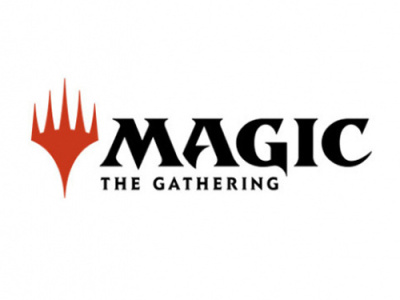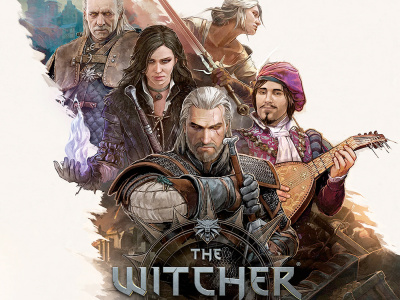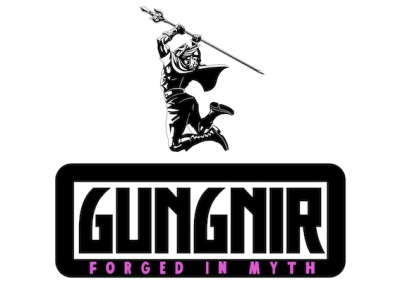
With the news that Comic Buyer’s Guide was shutting down (see "'CBG' DOA"), we took some time to talk to Maggie Thompson, who's played a critical role, about the history of this critical publication in the history of comics (also, see "Confessions of a Comic Book Guy--The Beating Heart of Comics").
How long has Comics Buyer’s Guide been published?
It began in 1971 when Alan Light, who was a high school student, took money he made from chores and decided to try an advertising publication. We (Don and Maggie Thompson) had been in the middle of doing a newsletter and we decided to stop doing the newsletter, and we announced it in advance. He had asked us if we would be willing to write content for the newsletter that he would then publish and distribute. We said, "No, we’re done. That was it." I’m sure we were polite, but we were pretty burned out at that point.
So Alan took the money, and being a smart kid, created The Buyer’s Guide for Comic Fandom, which started in 1971, which I believe was the same year as Overstreet’s Price Guide. It was comic book time. He did a great job, he set it up beautifully and built a great business out of it.
We missed that frequent contact with folks so we began doing a column ourselves for his magazine. Despite having told him we weren’t interested, we ended up doing it after all.
Eventually Chet Krause, who was a publisher of collector publications (which started with Numismatic News and then broadened into diversified fields), found out about Buyer’s Guide, bought it from Alan and asked Alan to recommend someone who had newspaper ability to come in and turn it into a newspaper. The Cleveland Press had folded in the summer of 1982 and this was the autumn of 1982 so it timed out beautifully. I had created a magazine for Hal Shuster, New Media/Irjax and their publishing company New Media Publishing, so I had that credential. It all came together with Buyer’s Guide and we joined the company January 3, 1983.
Was that when the name changed?
We discussed it and decided we wanted the first word to be "comics" rather than "buyer’s guide" because "buyer’s guide" doesn’t say "comics." So we suggested they change it to Comic’s Buyer’s Guide and it morphed. They were very nervous initially about changing the title, so their process at that point was if you were going to change a name, they gradually faded the one out and the other one in. Basically they faded out the words that were no longer in the title and faded in the words that were in the title. So it was not instantaneous, but it was an evolution, I think, over a year.
In those early issues in the 70s, was it all ads?
It began with the idea that it would be entirely advertiser supported even to the point at which subscriptions would be free. That model didn’t work, and as Alan increased frequency and looked for the best financial models he discovered that second class mail required an editorial percentage in order to qualify for a mailing permit. So he stepped up the editorial content to get to the required level that the post office demanded.
So there was some editorial content for the first 10 or 11 years, but that increased when Krause bought it. What was the frequency when Krause bought it?
When Krause took it over it was a weekly. Our column, the editorial content, was only in every other issue because that was what postal regulations required. Chet wanted to turn it into a newspaper, so the editorial content had to be increased, but it still had to meet the percentage requirement, I believe, every other issue. Some issues would have more advertising than others by page count, and page count was determined by the number of ads in the issue.
Can you describe that period in the 80s that corresponds to the growth of comic stores, and comic fandom and geek culture, for want of a better term, and the role of Comics Buyer’s Guide in that whole process?
I think we were part of the party. People were having fun with it and we were part of the fun. It was a delight to be in contact with so many people, and to really work at the outreach that we were all looking for at that point. Because what is today such a popular art form that it makes the cover of Entertainment Weekly, at that point still was a very localized, almost a cult following of aficionados who understood the art form.
Now it’s kind of taken for granted and has almost gone the other way. It has reached the point at which some people are concerned that comics require so much knowledge that the beginner would have a lot of trouble finding their way through this incredibly technical art form. As we all know, comics are fun. I have lectured a couple of times with the title "Don’t be afraid of graphic novels, they’re just comic books," which to me is very amusing.
It’s kind of sad that not that many kids read comics these days, but I think one of the things that’s happening is the world has evolved to the point at which librarians understand comic books. So what would have been unthinkable as I was growing up, the idea that comic books are part of a library collection, has now become matter of fact. I haven’t really addressed your question about the world in the 1980s...
What was the role of CBG in terms of communication. What kind of articles were you running, what was happening in the letters, who were the ads from and to?
Our goal was to have a publication that was by and for fans, collectors and professionals, so we did all of those things. We did technical articles for the retailer; we did technical articles for the creator; we did historical articles for the person who never had seen an issue of Action Comics before 1950. It was all there, all part of the mix, trying to provide both background and current information and it was a blast.
The only problem was that it was basically Don and me and sometimes an assistant. And, by the way, when we were first hired here, we also did a publication called Movie Collector’s World that had also been acquired from Alan and in fact the title had been Film Collector's World and Krause changed it to Movie Collector’s World because film as a collectible was going away whereas video as a collectible was increasing.
What kind of ads were running? Who were they from and to and what kinds of things were being advertised?
Anybody who was buying or selling for any reason. So it was everything from the private collector who just had one issue of a comic book that they thought was valuable and they wanted to sell; to the collector who was looking for that one comic book that they wanted to buy; to shops trying to buy and sell stock; to the publishers who were trying to reach out to the potential buyer; and to top it all off, to the distributors to the direct market who were trying to reach comic shops, and the comics shops who were trying to reach the potential distributors. So it was a heady mix of aficionados and professionals.
Among the things that happened in those early years was that there had been the first national comic book distributor established within two years of that transfer to Krause. So New Media/Irjax had set up as a national distributor and then Diamond grew, and Capital City, and so and so on, so there was even an association of direct distributors. But nobody was able to know for sure just how many shops were in the market because one shop might take materials from multiple distributors. So it was quite the wild, wild west at that point.
We tried to be the communication tool for everyone in that universe.
It was a place both for commerce and communication, and commerce in the sense that ads advertise specific products that people were buying for specific amounts of money, then they’d send money through the mail. People would mail the products to them. It seems unbelievable that that was the basis of something that is handled now in such a frictionless way. What are your thoughts on the evolution that caused that model to become less successful?
Oh, the Internet. The Internet took things from a field in which information delays were taken for granted to a world in which information is immediate. As an example, you got the information that CBG is wrapping up and I’m talking to you within 24 hours of that information being made public. That means that a monthly, a weekly, even a daily seems delayed if you’re depending on print.
When you changed frequency and format (in 2004), was that a result of the changes the Internet was presenting?
Yes. A weekly was not timely enough, so what we needed was a magazine that would feed the desires of someone who wants a magazine rather than a newspaper because the news and ads were old by the time the readers got it even with a weekly. So we said, "How can we address that?" And John Jackson Miller was behind the redesign. He did a fantastic job of saying, "What can we salvage from the old and what do we put in the new to give our readers all that we can possibly offer them?" And again, we’ve got wonderful historical articles, wonderful new articles, in-depth pieces, price guides; everything we could possibly imagine got crammed into that magazine. We were very fortunate. You must know if you look at newsstand magazines today, they’re pretty skinny.
What are you going to be doing next?
The same week that the shut-down was announced, my first posting came at the Comic-Con.org blog with a weekly update with four people in the field and my kicked it off. The blog is called Toucan, which of course, is the emblem of Comic-Con. My first assignment was to write a 2,000 word essay on why I love comics, and that was a pleasure to do, you can believe. I wrote it last year so it could be online as soon as they were ready; so literally, this week, the first posting went up and the cancellation was announced.
And I’m looking forward to getting around to projects I’ve had on hold for a long time, including indexing my own comic book collection and working on my own articles and posting on my Website, www.MaggieThompson.com. I’ve been very lackadaisical about posting there and my goal is to post daily from now on. I’m not really looking for work. I’ve got skoodles of stuff to do.







